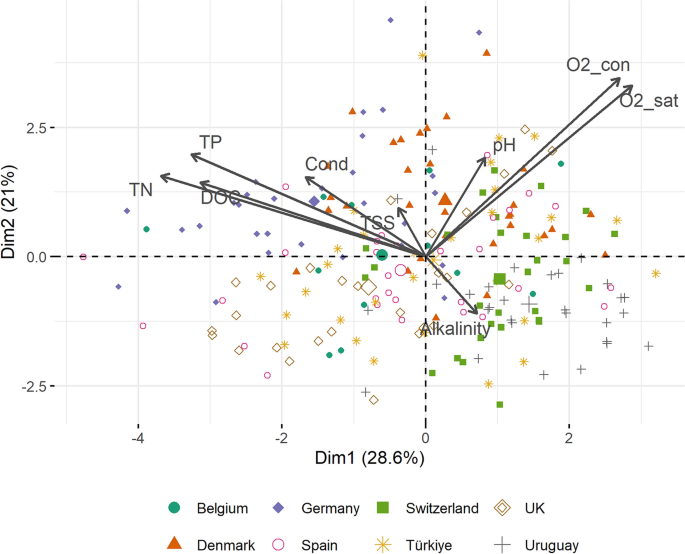Ponds are vital freshwater ecosystems that support rich biodiversity and provide important services to people and nature. However, they are still often overlooked in studies on land use and climate change. To better understand how these small but important water bodies are affected, we have collaborated in the data analysis from 240 ponds, surveyed across eight countries—seven in Europe and one in South America (Uruguay).
The study, published in the journal Hydrobiologia (Bartrons, 2025), examined how a combination of pond-specific features, surrounding land use, livestock activity, and climate patterns influence the concentrations of key nutrients, such as nitrogen and phosphorus. Results showed that the structure of the ponds themselves plays a major role: shallow ponds and those that dry out quickly (short hydroperiods) tended to have higher levels of both nitrogen (TN) and phosphorus (TP). In contrast, deeper ponds that stratify thermally (form temperature layers) had higher nitrogen levels, likely due to internal recycling of nutrients.

The first two ordination axes of a Principal Component Analysis (PCA) based on standardized mean annual physical and chemical variables in the ponds (points). The larger symbols in the plot represent the centroids (group means) for each country, indicating the central tendency of that group in the ordination space (Bartrons, 2025).
The surrounding landscape also mattered. Ponds in agricultural areas had elevated nutrient levels, while those near forests showed lower phosphorus concentrations. Seasonal changes further shaped these patterns—phosphorus levels were typically highest in summer, while nitrogen was diluted during wetter, cooler periods, especially in semi-permanent ponds.
Overall, the study led by our collaborator Mireia Bartrons, from the Aquatic Ecology Research Group at the FCTE, and with participation of two members of the lab including PhD student Jing Yang as a co-first author, highlights how pond health is shaped by a complex interplay of physical characteristics, land use, and climate. These findings emphasize the urgent need to better protect and manage ponds within broader environmental and land-use policies.
Cite:
(Bartrons, 2025) Bartrons, M., Yang, J., Cuenca‑Cambronero, M. et al. Why ponds concentrate nutrients: the roles of internal features, land use, and climate. Hydrobiologia (2025). https://doi.org/10.1007/s10750-025-05907-0
